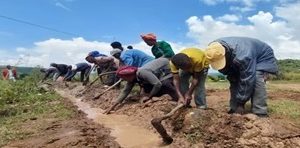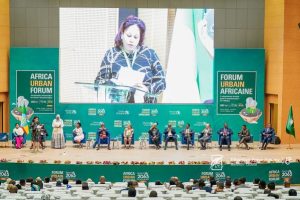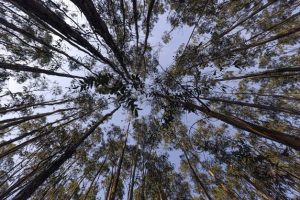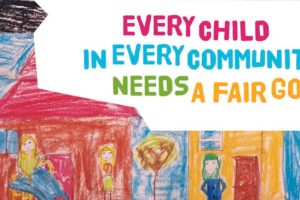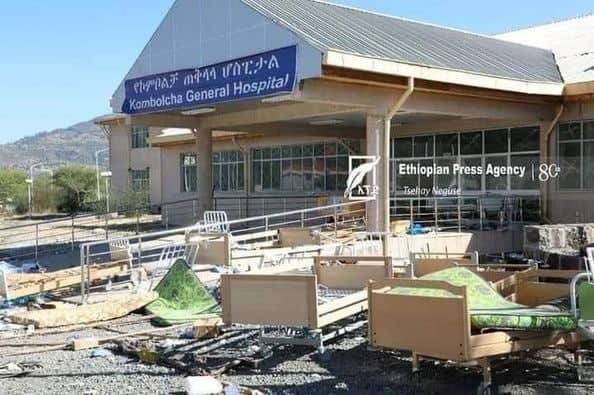
I nvestments demanding a couple of years to be functional in full swing can be wrecked within fractions of a second whenever chaos and social unrest happens in a given nation.
Though it is an inevitable fact, it could be devastating and heartbreaking when the damage is carried out deliberately and calculatingly.
Categorizing some nationals as historical foes and preaching state, people with this ill-intended ideology, the terrorist Tigray peoples Liberation Front (TPLF) has caused untold property damage in Afar and Amhara states. Setting all the rhetorical part of the destruction process aside and put the evil proceedings as they are, this piece would like to cite the ways how can the reconstruction work be fostered and who are expected to take part in it. Without a doubt, reconstructing all the social institutions damage by the terrorist TPLF enterprise is not the matter that is left solely to the government, state administrations or any concerned body as it requires the combined effort of all. Following the relentless effort of all Ethiopians at home and abroad ranging from an ordinary citizen to high profile investors and responsible entities, a number of institutions are going operational and the respective service unloading bodies have enjoyed getting it. So the saying goes, “Two heads are better than one,” to say when two people work together they are more likely to solve a problem than one person doing it alone, and when this number rises, the capacity to make things better can be beefed up.
This idea is equivalent with what Ethiopia has been facing following the destruction because of the war triggered by TPLF.
Thanks to the firm commitment of the government, investors, responsible citizenry, non-governmental organizations, foreigners of Ethiopian origin and others, the damaged social institutions like schools, universities, hospitals and other health facilities have resumed to provide the society with the required services.
These bodies have been mobilizing to rebuild a range of social service institutions. Having a short stay with The Ethiopian Herald, Senior Journalist, Hailu Sahiledingle said that as stated by the government, the institutions are going to be built to excel what they were; and the finance or the wealth they require to be reconstructed is quite immense.
Owing to this, it could hardly be afforded by the sole effort of the government. Hence, all citizens of the nation at home and from abroad are expected to actively participate in this historic epoch and get their fingerprint stamped on the journey. Of course, the process takes time
as building or reconstructing is not as easy as destructing in no time. As to him, the first step is soliciting fund, using it properly and pumping it into the target destination as well as ensuring that all the victims are benefited. The people in affected areas should be made part of the solution to help them develop sense of belongingness and firm responsibility for the properties. This is the right strategy to heal the material and psychological damage of citizens of the areas under discussion.
As learnt from government officials, the reconstruction process in many districts of the conflict-prone areas in Afar and Amhara states is well underway. The reconstruction of institutions like school buildings, health facilities and government offices can be channelized through other agencies including the local governments and the line ministries.
As far as the health sector is concerned, there are centers that need reconstruction, and many are completely damaged, as to the report from the government. Reconstruction is going on for a number of buildings while retrofitting and refurbishing works have completed for many health and educational institutions. He further elaborated that the work has to be well organized and the benefit of the affected segments of the society needs to be ensured.
It should be well comprehended that one can come and act accordingly to build the country in general and reconstruct the damaged institutions and infrastructure in particular.
As Ethiopians at home and abroad are committed more than ever before and consolidated unity, the planned work will be easy even get institutions more excelled than they were before.
The fundamental point that needs to be taken into account along this line is that to reconstruct the damaged physical health and educational institutions, it requires 36 and 100 billion respectively; as leant from the Ministry of Health concerning health matters. It is quite inevitable that war is a destructive move with immense loss of life and property damage. “We all have to comprehend the significance of coming together and working hard as it fosters activities geared towards building new nation let alone getting the lost ones repaired. Yes we Ethiopians are known for making history in all aspects,” said Mahlet Nega, a Social Worker at Yeka sub city.
As to Mahlet, since the damage occurred against social service providing institutions, infrastructures and other related assets is immeasurable, the governments, investors, various companies, banks, as well as the public at large are expected to move in unison to attain the set plan of the nation— excellently reconstructing the damaged institutions. “By and large, keeping the effort of restoring the damaged institutions as it is, and rehabilitating displaced citizens is quite important,” she added. “We must all be aware of the untold damage in the country due to which hundreds of thousands of people were forced to leave their area for their safety.
The displaced segments of the society have been suffering from acute hunger as all the food supply was plundered following the attack provoked by the war monger group of the terrorist group.
Thus, exerting a combined effort and rehabilitating displaced citizens is the call of the day,” she underlined. Displacement is a painful process and every effort should be taken to avoid or minimize disrupting people’s lives to the maximum extent possible. At the same time, relocating people also provides them with new opportunities which require time.
The essence of good rehabilitation is to minimize relocation stresses and expedite the restoration of disrupted livelihoods.
The Afar and Amhara states experience merit attention as it puts in place unique mechanisms for replacement of agricultural land at market prices and setting up a separate unit for coordinating and managing rehabilitation. As to her, displaced people need to be rehabilitated, the damaged institutions have to be reconstructed as well as the peace and security of the affected segments of the society has to be maintained.
Let me exhort my case citing what is stated by the social worker that reads ‘there should be a stronger commitment to active engagement to preempt impoverishment risks and take remedial measures, rather than passive contemplation in the flaws of rehabilitation and resettlement programs and their impoverishing effects.’ She said, “If we all run activities in a coordinated manner bridging pessimistic gestures that amplify destructive utterances of no use, things will bring about a difference and help the nation hit the set target at national level.”
BY MENGESHA AMARE
The Ethiopian Herald 20 February 2022


